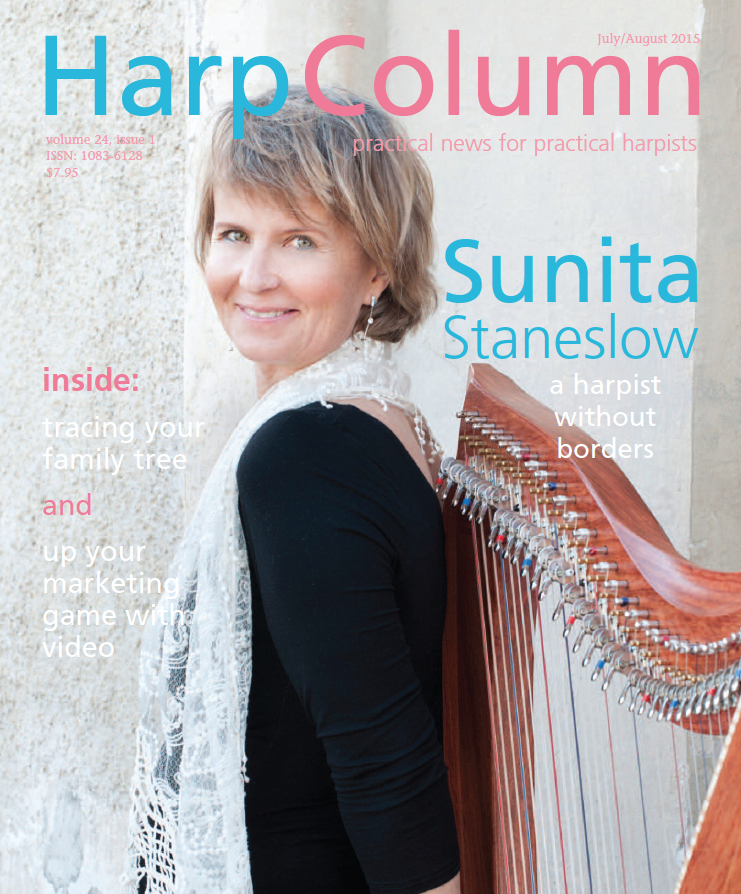Small world. I laugh when I hear that phrase because, as a harpist, the world sometimes seems like a one-room schoolhouse. It’s small and getting smaller all the time.
Distance is no longer an impediment to many things in today’s world, including studying the harp. Ever since trans-Atlantic passage went from a harrowing week-long journey by boat to a simple overnight flight, the harp world, like our larger world, has gotten much smaller. Add to jet-setting the ease and speed of video chats on the Internet, and there is virtually nothing to stop an enterprising harp student from seeking the tutelage of nearly any teacher in the world.
If you want to see proof of how small the harp world has become in the last few generations, just take a look at the diverse lineage of some today’s young professional harpists in “One Big Happy Family” on pg. 34. Kela Walton took on the epic task of looking at 250 years of harp history, packing the highlights into a brilliantly concise article, and creating one sprawling tree where nearly any harpist can trace their lineage and add their branch (including you!). Even the hippest of harpists will struggle to hide their geeky side as they look at the connections between their harp heroes. I mean what harpist isn’t going to get a kick out of seeing their name connected to legendary harpists like Bochsa and Naderman or find out that the great Alphonse Hasselmans was their great-great-grandfather?
If you’re thinking to yourself that you can write off this article as just another boring music history lecture, irrelevant to your playing, you might want to reconsider. Walton not only combed through volumes of historical sources to create our harp family tree (so you don’t have to), but she talked to some of today’s leading performers and teachers to find out why any of this matters. I won’t spoil it for you, by telling you what they said here, but trust me, the wisdom and insights shared in the article are worth reading, and maybe even putting up on your wall.
For us as a community, I think one of the important take-aways from this article’s examination of family ties is that there are two sides to the coin when it comes to the diverse roots of many of today’s young harpists. Certainly technology has made it easier for harpists to study with more teachers than they could have even a generation or two ago. A century ago, you would have been hard-pressed to find a harpist with more than one or two major teachers. But with the proliferation of summer programs, study abroad opportunities, and Skype lessons many of today’s harpists will study with three, four, five, or more major teachers as they learn their craft.
Having more tools in your tool belt is never a bad thing, especially in today’s rapidly changing marketplace. However, when we spread ourselves thin studying with teachers from many different branches, we risk missing the opportunity to “go deep” with our studies, as University of Texas harp instructor Delaine Fedson Leonard put it.
The one thing every harpist on that tree can agree on is that it doesn’t matter how many prestigious teachers you can list in your bio, it doesn’t matter how many summer workshops you attend, it doesn’t matter how many YouTube tutorials you watch—there is simply no substitute for the time you put in on your bench, behind your harp, doing the hard work it takes to become the harpist you want to be. •






